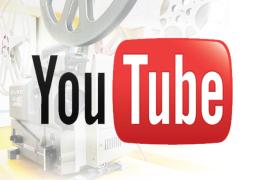YouTube in the Classroom
YouTube is one of the most powerful web applications on the Internet, with over 1.311 billion videos and counting. More than just an entertainment portal, YouTube can be a research, presentation, and education tool. Because of its seemingly infinite supply of content, YouTube lends itself to a wide array of subjects and students. According to New York Times best-selling author John Green, “[w]hat YouTube really imagines is a world in which any person with high speed Internet access can, if she or he is adequately motivated and works hard, have access to a good education through online video ....”
However, YouTube does need to be a solitary endeavor. It can be incorporated into the classroom to help bring subject matter alive. Whether it is footage of current events like the 2009 uprising in Iran or film footage of the biodiversity of the rain forest, videos helps engage students - especially those who learn visually.
The challenge lies in how to make YouTube work for your class. The first hurdle, is where to begin. Fortunately, aside from its vast catalog, one of YouTube’s best features is its search function. If you are having trouble finding a relevant video, you can also search for a channel devoted to the topic you are interested in. Once you find a relevant video, YouTube will automatically line up related videos for you to watch next.
An important feature for educators is YouTube EDU. This portal allows students and teachers to access a broad range of educational videos, including lectures and speeches. YouTube EDU features thousands of videos from partners like National Geographic, TED, and PBS. It is a great starting place to search for class-related content and be inspired by the work of other academics.
Incorporating YouTube video into a class is not without its challenges. Internet content is constantly changing, and so is YouTube. As a result, videos that you were basing a class around could be removed just before you planned to show it. Additionally, because YouTube videos stream, they require an active Internet connection to play.
 Fortunately, there are several tools which can help you sidestep these concerns. Keepvid.com and Clipconverter.cc allow you to save YouTube videos to your computer so that you can play them without needing an Internet connection. VLC Player is a media player that allows users to download and store multiple types of media – including video and audio in many different formats. An added bonus, VLC is a standard application on the Digital Classroom Podium. For more information on using ClipConverter, view the "How Do I Download a YouTube Video?" tutorial.
Fortunately, there are several tools which can help you sidestep these concerns. Keepvid.com and Clipconverter.cc allow you to save YouTube videos to your computer so that you can play them without needing an Internet connection. VLC Player is a media player that allows users to download and store multiple types of media – including video and audio in many different formats. An added bonus, VLC is a standard application on the Digital Classroom Podium. For more information on using ClipConverter, view the "How Do I Download a YouTube Video?" tutorial.
